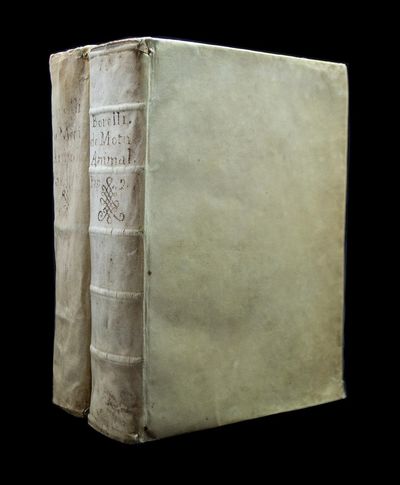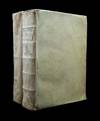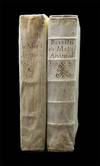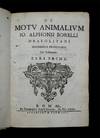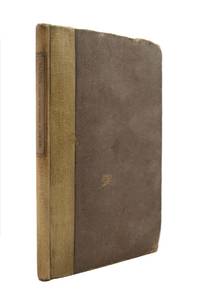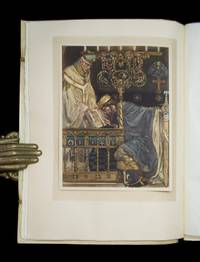first edition
1680 · Rome
by BORELLI, Giovanni Alfonso
Rome: Ex Typographia Angeli Bernabò, 1680. Full Description:
BORELLI, Giovanni Alfonso. De motu animalium. Rome: Ex Typographia Angeli Bernabò, 1680.
First edition. Two quarto volumes (8 1/4 x 6 1/8 inches; 209 x 157 mm). [12], 376, [12]; [8], 520 pp. With eighteen folding engraved plates numbered "Prima" through "Decimaoctava."
Uniformly bound in contemporary vellum. Title on spines in old ink manuscript. All edges speckled brown. Some soiling to vellum. Volume II with some toning and foxing. Volume I quite clean. Some very small closed marginal tears in Volume I in signatures TT2-ZZ, all except a few, neatly repaired (truncated)
BORELLI, Giovanni Alfonso. De motu animalium. Rome: Ex Typographia Angeli Bernabò, 1680.
First edition. Two quarto volumes (8 1/4 x 6 1/8 inches; 209 x 157 mm). [12], 376, [12]; [8], 520 pp. With eighteen folding engraved plates numbered "Prima" through "Decimaoctava."
Uniformly bound in contemporary vellum. Title on spines in old ink manuscript. All edges speckled brown. Some soiling to vellum. Volume II with some toning and foxing. Volume I quite clean. Some very small closed marginal tears in Volume I in signatures TT2-ZZ, all except a few, neatly repaired (truncated)
